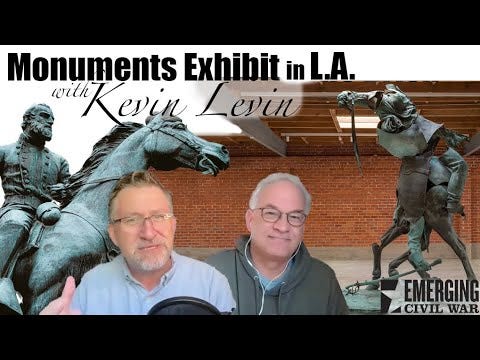Exploring the New Art Exhibit on Confederate Monuments at the Brick Museum
Thanks to my good friend and fellow historian Chris Mackowski over at Emerging Civil War, I had the unique opportunity to delve into the new art exhibit focusing on Confederate monuments at the Brick Museum in Los Angeles. The invitation to discuss such a significant topic is not just an honor, but also a vital engagement with the contours of history we often grapple with today.
A Gathering of Voices
Recent discussions surrounding this exhibit have underscored its potential to elicit strong reactions from diverse audiences. And that, I believe, is a hallmark of compelling art. Good art doesn’t merely decorate walls; it provokes thought, challenges perceptions, and engages viewers on deeper levels. This particular exhibit invites us to confront our assumptions about history, memory, and the politics intertwined with them.
The significance of this exhibit is amplified by the fact that it features interpretations and narratives constructed by African American artists. For many, this dual lens—of both the historic monuments and contemporary interpretations—asks us to reconsider the value and meaning of these symbols in our cultural landscape.
Historical Narratives Reexamined
One of the more controversial yet powerful aspects of this exhibit lies in its critique of the “loyal slave” narrative that has been historically represented in various Confederate monuments. Once a common trope among white Americans, it perpetuated the idea that enslaved individuals were, and should be, depicted as loyal accomplices to their enslavers. Such narratives shaped public understanding and memory, notably influencing memorials, including those in places like Arlington National Cemetery.
By bringing the voices of African American artists into this conversation, the exhibit reclaims and reframes these narratives, challenging viewers to confront the uncomfortable truths embedded within them. It compels us to question whom these monuments were built for and what they perpetuate in our collective memory.
The Emotional Landscape of the Exhibit
If the imagery or concepts presented in the exhibit provoke discomfort or offense, it’s essential to reflect on the lived experiences of African Americans who have had to contend with these representations throughout history—in many cases without recourse. This discomfort is merely a fraction of what communities have faced while navigating a landscape littered with symbols glorifying a painful past.
In considering the reactions to the exhibit, it’s crucial to acknowledge that feeling challenged or uncomfortable is a small price to pay compared to the historical context many have had to endure. This exhibit is not just about art; it is a poignant reminder of the ongoing conversation surrounding Civil War memory and its implications in the present day.
Engaging with the Conversations of Memory Politics
The exhibit serves as an illuminating example of the politics of Civil War memory. It invites dialogue about who gets to tell the stories of the past and how those narratives shape our understanding of history today. The art prompts viewers to re-evaluate who is positioned as a voice in historical discourse, and whose experiences or interpretations have been marginalized over time.
As a historian, I find this interplay between art and history particularly compelling. It underscores the nuances of collective memory and the importance of ensuring varied perspectives are included in the narrative tapestry.
During my recent discussion about the exhibit, which you can see in the accompanying video, I may have been a little distracted by the lighting conditions in my office—an unintentional light show that added some visual flair to our conversation. Nonetheless, the core message remains: this exhibit is a vital intersection of art, history, and social commentary, reflecting the complexities of American memory.
I encourage everyone to engage with this exhibit, as it challenges us all to think deeply about the legacies we inherit, the narratives we choose to amplify, and the dialogues we must foster moving forward.



